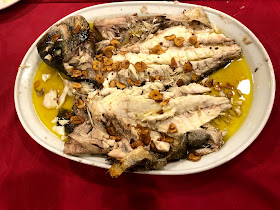After yesterday's Pied Flycatcher it was great to see two Redstarts at Croft Quarry. It had been seven years since the last one at Croft Hill. Foolishly I had made the rookie error of forgetting to change my camera battery before leaving home, but luckily Adey Baker was on hand to record the event.
 |
| Male Redstart, Croft Quarry, August 25th 2019. Photo by Adey Baker |
 |
| Female type Redstart, Croft Quarry, August 25th 2019. Photo by Adey Baker. |
Below are the sightings for south-west Leicestershire.
1. Redstart: a scarce passage migrant to the area with spring records being the least common. Records were more frequent historically. Breeding was recorded at Croft in 1945 and 1946 and at Hinckley in the latter year. Further breeding records came from Market Bosworth in 1951 and 1953 plus Stoke Golding in 1952. Breeding was also recorded at Market Bosworth in 1972. (Birds of Leicestershire and Rutland).
Modern Records:
1999: juvenile at Croft Quarry on August 26th (CDB), Huncote on August 27th (TK, GAD) and Croft Hill on September 22nd (CDB).
2000: single females at Frolesworth on July 30th and August 7th and 8th (GER) and a male at Croft Hill on August 19th (CDB).
2002: a female at Frolesworth Manor Lake on April 28th (GER), a male at Croft Hill between September 1st and 4th (CDB) and a female/juvenile at Fosse Meadows on September 19th (GER).
2003: single females at Hill Farm, Frolesworth between August 27th and 29th (GER) and October 2nd (GER).
2004: a male at Hill Farm, Frolesworth on April 19th (GER).
2006: a female at Fosse Meadows from April 23rd to the 25th (DMi).
2008: three 1st-winters at Croft Hill on August 24th and 25th (ABa, CDB et al.); also single 1st-winters at the same site from August 30th until September 2nd (CDB, DLT) and September 9th and 10th (BM, AP, DG, CDB).
2009: a female at Stoney Cove on April 28th (CDB) and two 1st-winters at Croft Hill between September 6th and 9th (ABa, RED et al).
2011: a male at Burbage Outwoods on April 8th (ABa) and single females at Frolesworth Manor Lake on September 3rd (GER) and Frolesworth Rectory on September 11th (GER).
2012: a male at Hill Farm, Frolesworth between April 13th and 15th (GER), a female at Brascote Pits on April 15th (CSG) and a female/juvenile at Croft Hill on September 29th (CDB).
2013: a singing male near Shawell on May 11th (CDB).
2016: a female at The Outwoods, Burbage on April 21st (RP).
2019: a moulting male and a female/1st-winter at Croft Quarry on August 25th (CDB, ABa).



















































